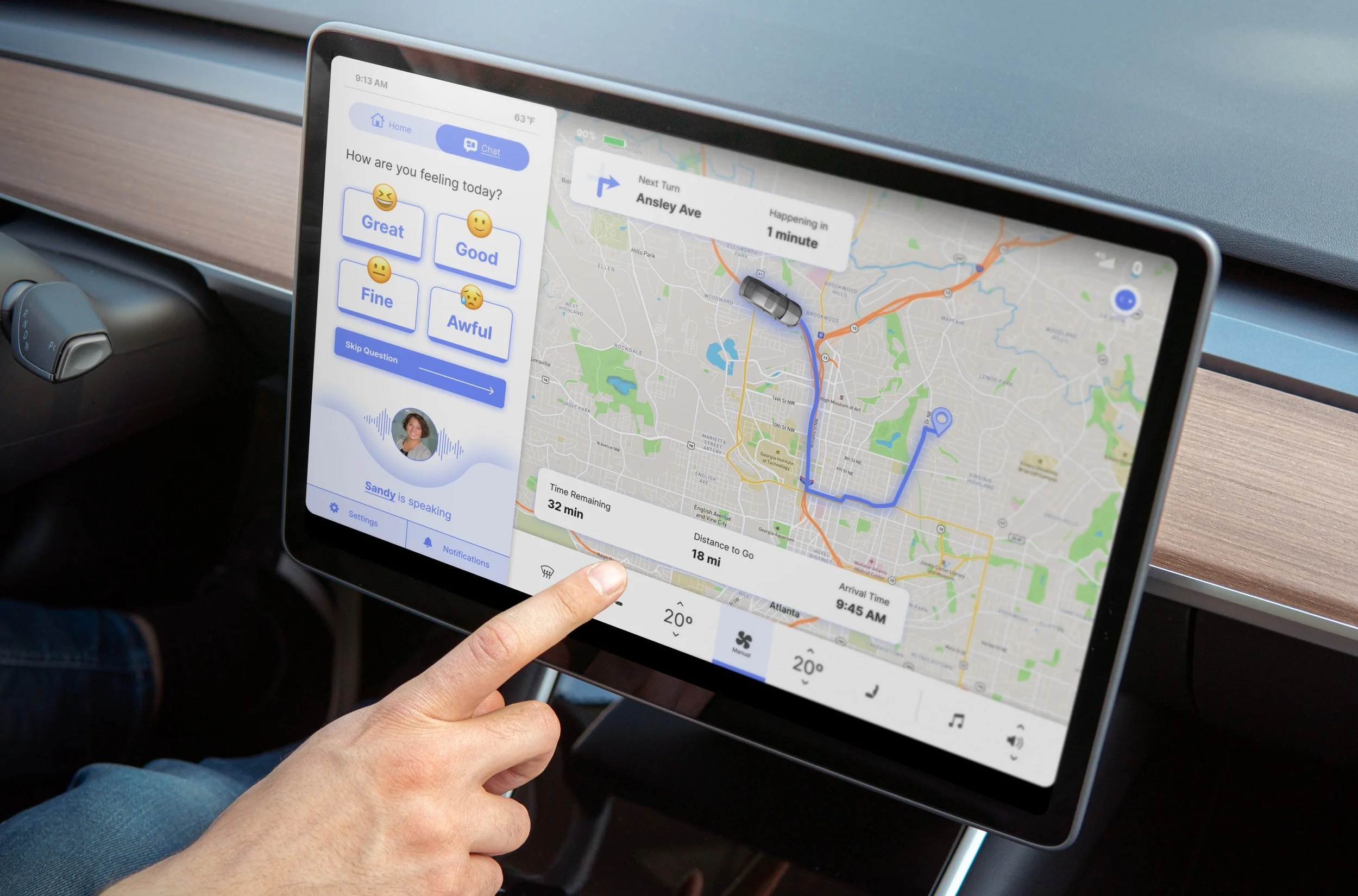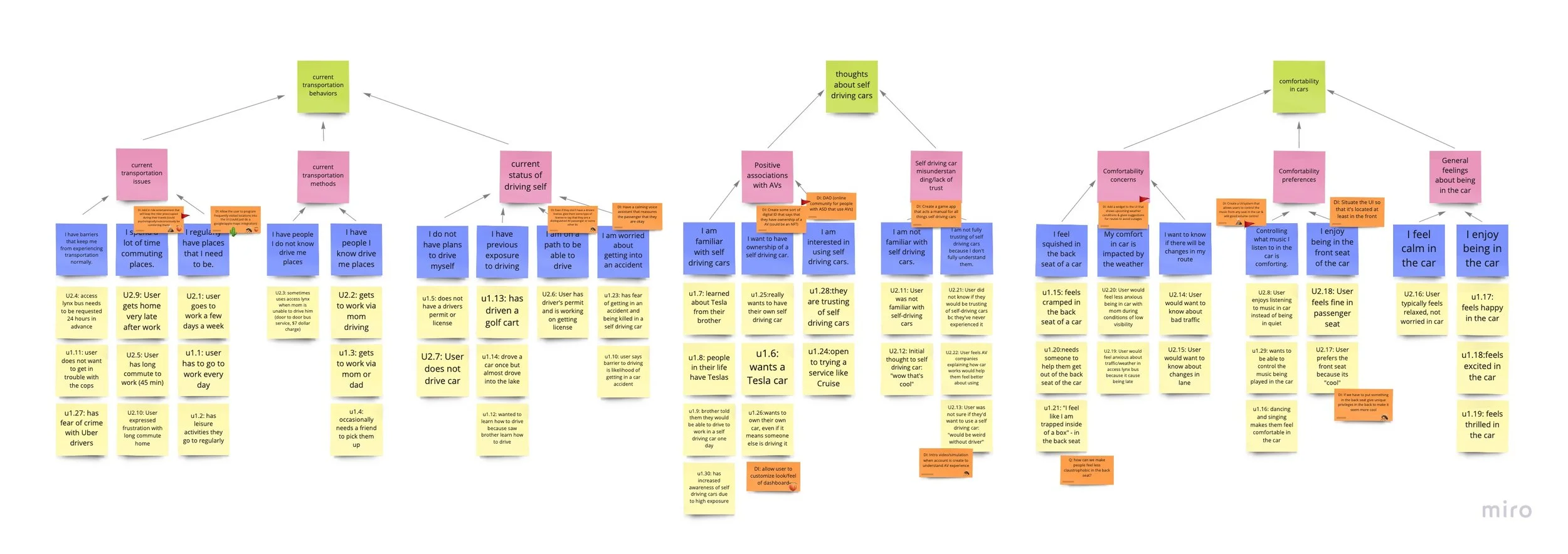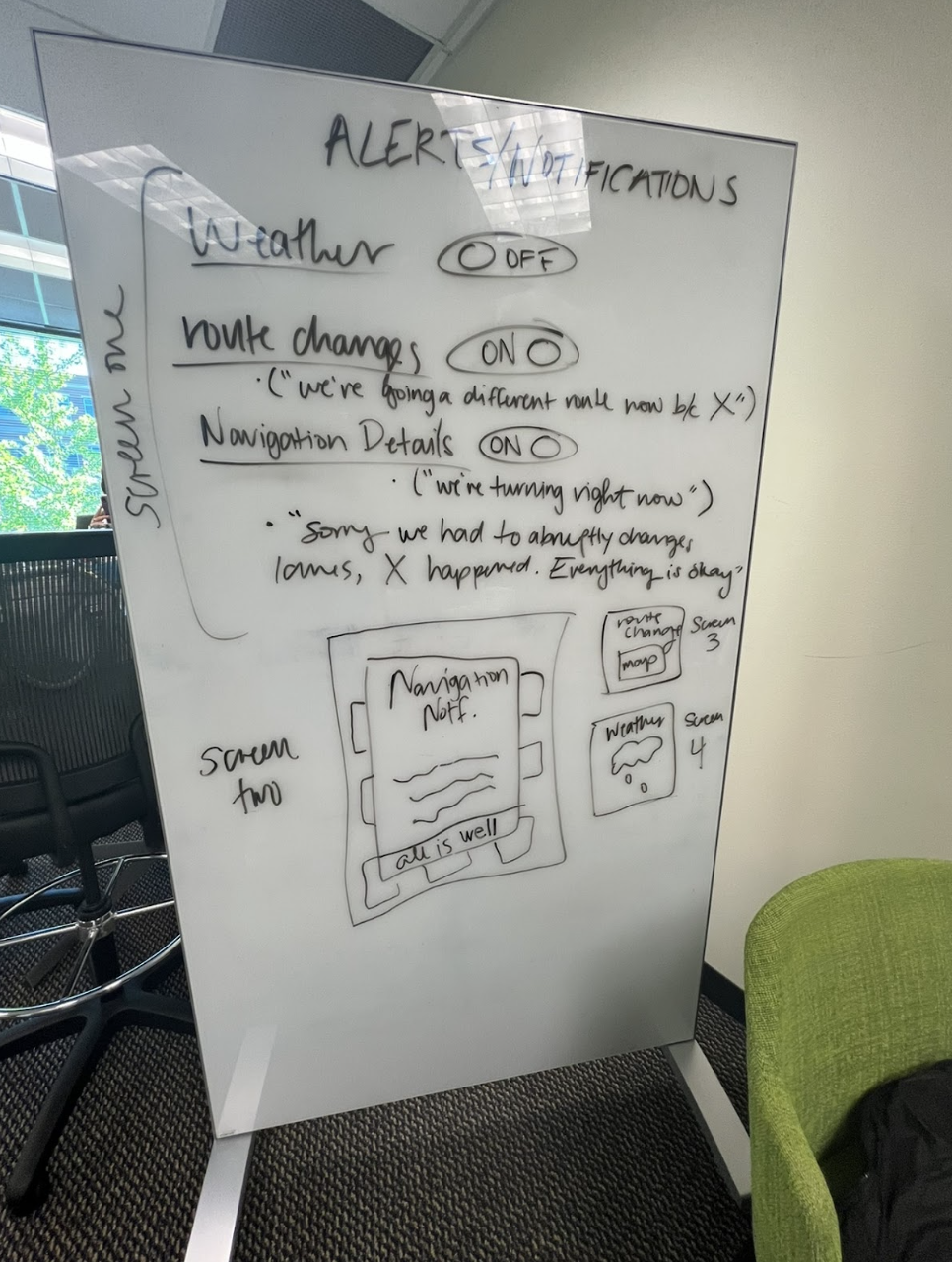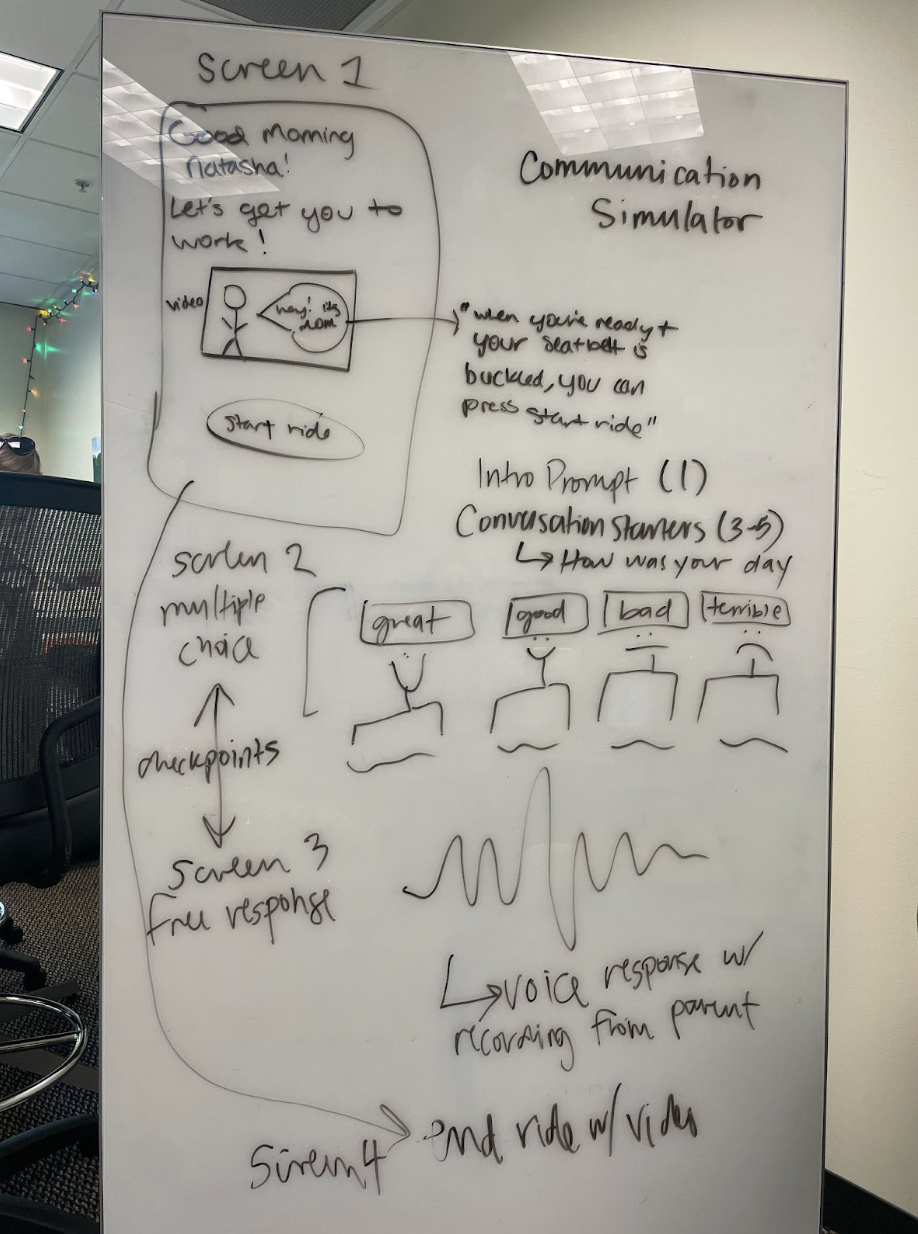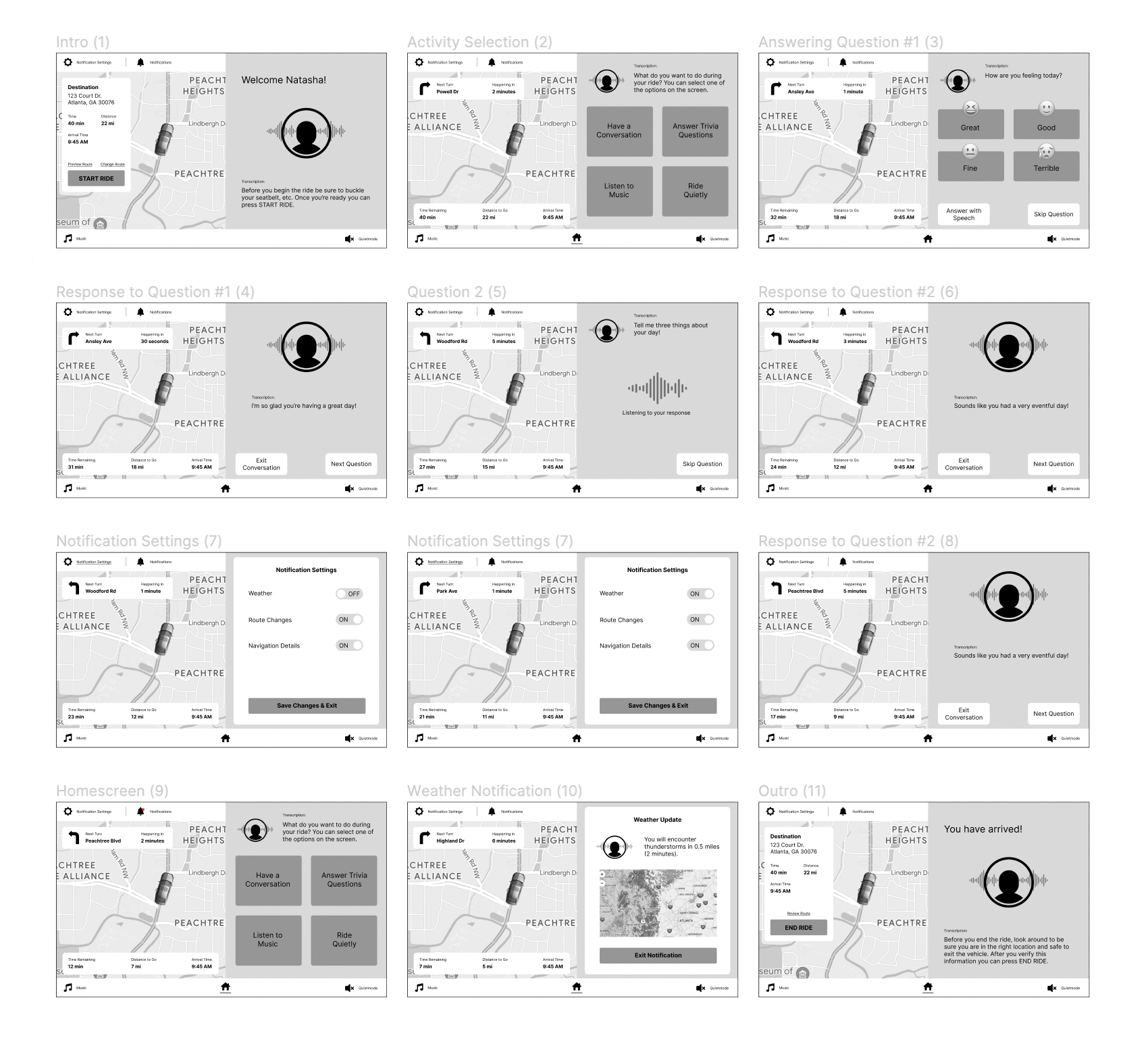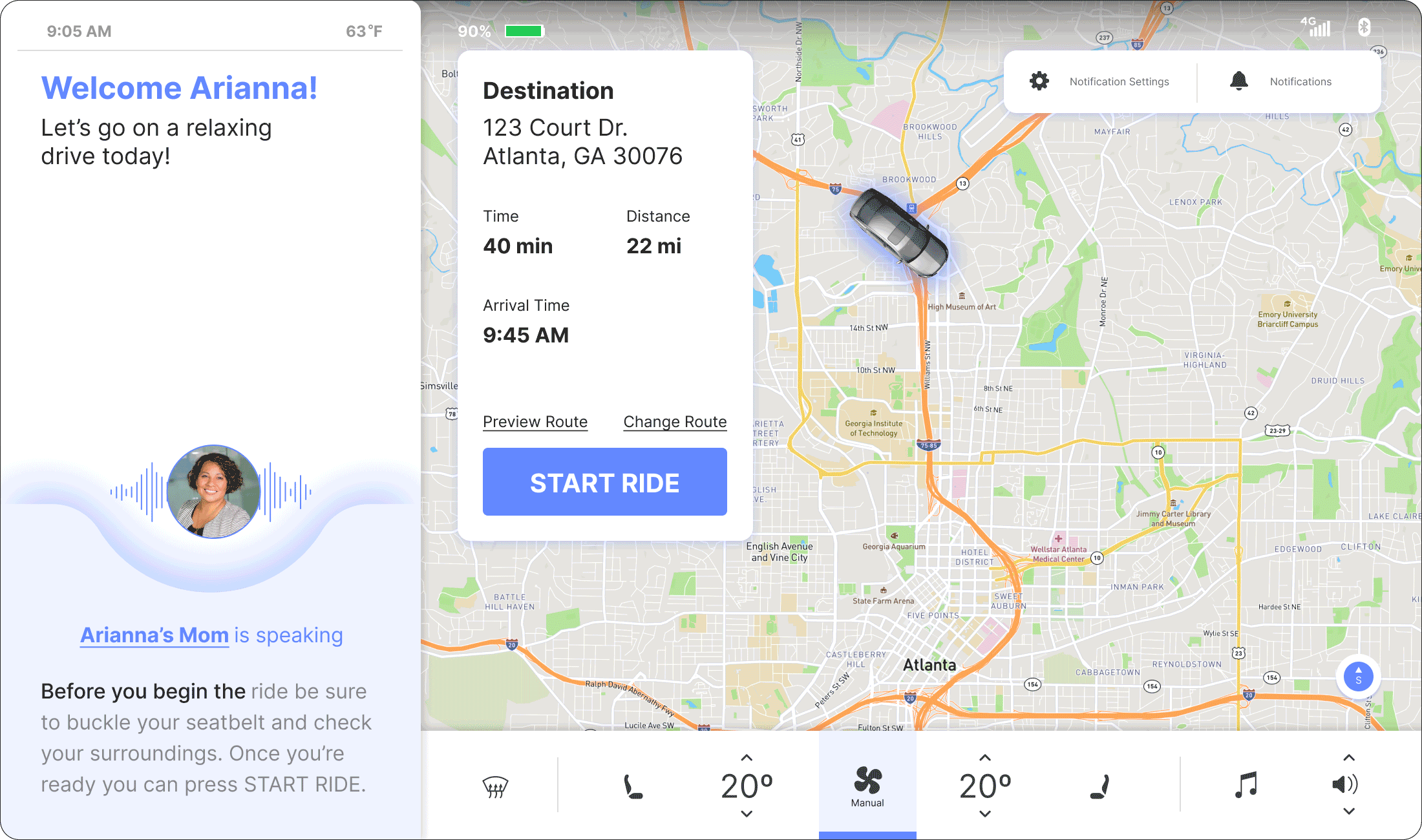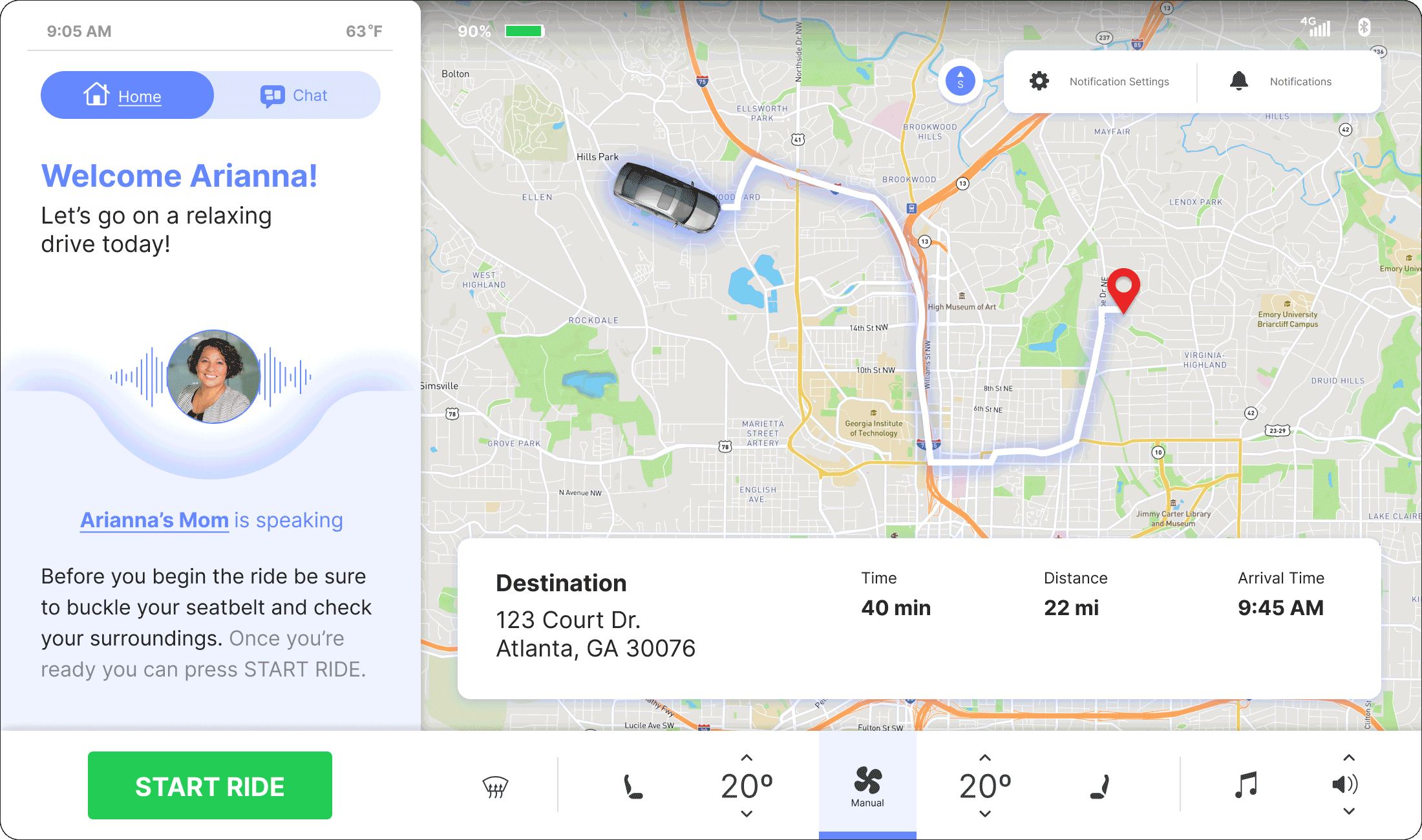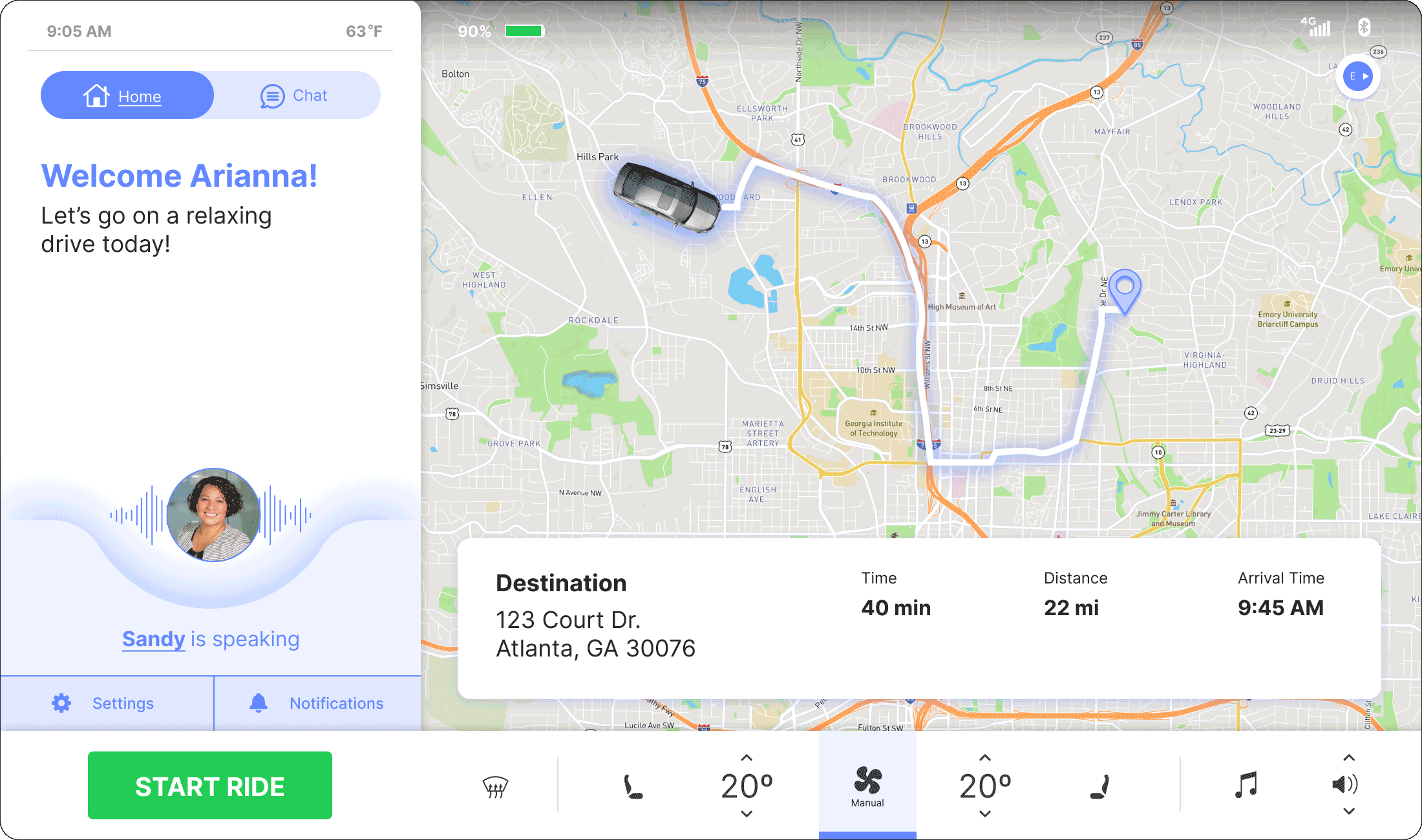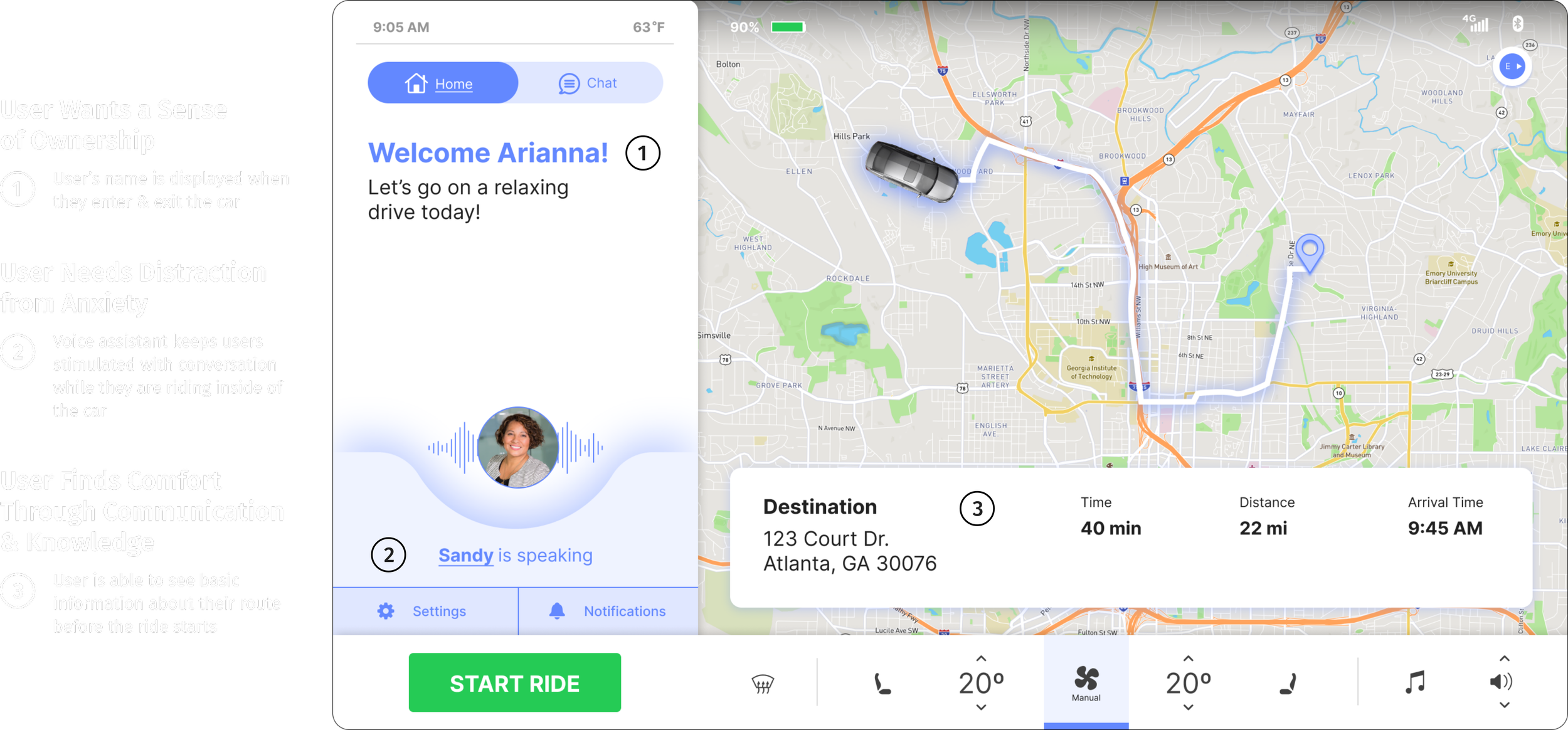Autonomous Vehicle Assistive Technology for People with Autism
Anxiety reducing graphical user interface with a communication assistant and notification feature
Project Summary
A major barrier to personal freedom and autonomy for people with Autism Spectrum Disorder (ASD) is transportation. Autonomous vehicles present an opportunity for people with ASD to start traveling independently as the technology improves. In a future scenario where all AVs are operating at a Level 5, the barriers for independent travel will significantly decrease. The main foreseeable issue with this form of transportation; however, will be the user’s reaction to riding in a driverless vehicle. To alleviate these anticipated challenges and anxiety triggers, we conducted user research in order to decide on a solution of a car dashboard interface with a communication assistant and notification customization feature. The impact of our product will afford people with Autism the opportunity to not only travel independently, but also become first adopters of evolving AV technology.
Duration
August 2022 - December 2022
Team
Arianna Mastali, Dipti Gupte, Lakshmi Seelam
My Role
UX/UI Designer
Tools
Figma, Miro, Qualtrics, Balsamiq
Final Design Walkthrough
Project Overview
Problem
The largest barrier to independence for people with Autism is transportation because of anxiety and executive functioning limitations.
Only 1 in 3 teens with ASD have a driver’s license and obtain it at a rate of 9.2 months later than other adolescents.
User Group
People with Autism Spectrum Disorder (ASD)
Stakeholders
Caregivers of People with ASD
Opportunity
Create an accessible technology that provides comfort to people with Autism while riding inside of AVs.
Research
Surveys
These surveys allowed us to use likert scale and open ended questions to acquire a larger set of data about our user group regarding preferences, knowledge, and current experiences.
One for People with ASD
One for Caregivers
Semi-Structured Interviews
These interviews taught us the dynamics of a conversation with people with ASD and provided an opportunity to collect qualitative information about their transportation experiences.
People with ASD
Caregivers
Research Objectives
Understand the user’s current emotional experience inside of a traditional car
Learn about the user’s knowledge and opinions about self driving cars
Determine the requirements for comfort as an individual with ASD
Data Analysis & Findings
of participants strongly agreed that they would feel uncomfortable because of a lack of control inside of an AV
60%
of users said their primary concern while using a self driving car would be anxiety or lack of comfort
80%
of participants agreed that being in a car makes them anxious
60%
Empathy Map
Based on the users comments during their interview sessions we created a chart that identifies how and what our users may think, hear, say, do, and feel during an experience inside of an AV.
Affinity Map
After we conducted an interview interpretation session with the findings from our semi-structured interviews we made an affinity map that identified our user’s core needs.
User Needs
From our affinity map we determined four core user needs that our solution should address.
Ideation
Based on our findings and our core user needs we started an ideation process to find a solution.
1. Brainstorm Design Ideas from Affinity Map
First, we walked the wall of our affinity map and created design solutions based on the findings from interviews. (See the orange sticky notes)
2. Organization Based on User Needs
We then sorted all of the design ideas from the affinity map underneath our four core user needs. This organization allowed us to verify that our ideas were meeting our users’ requirements.
3. Combine Design Ideas into Two Concepts
We combined our design ideas into two concepts so that our solution addressed all of the user needs.
Sketches & Concept Testing
Information Customization Assistant
This is a solution that allows the user to control whether they receive alerts about upcoming weather, route changes, and navigation details.
Communication Simulator
This product would allow the user to carry out a conversation with a voice assistant throughout their ride.
With our two design concepts we made sketches of our two ideas and presented them to our users and stakeholders for feedback. We wanted to know if our ideas would be useful to our users.
Wireframing
After we met with our users and stakeholders for the concept testing, we used their feedback to wireframe a car dashboard interface with a communication assistant and customizable notification feature.
Prototyping & Evaluation
My prototyping experience was an iterative process based on a series of evaluations. After each prototype evaluation I would make changes to our design in order to improve the usability and aesthetics. I was directly responsible for the design of the interface.
Prototype Iteration #1
Evaluation 1) Cognitive Walkthrough
Expert: Speech & Behavioral Pathologist / HCI Practitioner
Key Findings:
Add color and icons instead of relying on literacy
Make the buttons appear more tappable
Use microphone instead of siri bubble to indicate speech
Prototype Iteration #2
Evaluation 2) Heuristic Evaluation
Expert #1: HCI psychology professor & automotive UX expert
Expert #2: HCI practitioner with ASD user group experience
Key Findings:
Remove transcription because of conflicting speech and text
Make the VA an avatar instead of a real person
Improve consistency with button UI
Streamline notification settings information architecture and position
Countdown is stress inducing
Prototype Iteration #3
Evaluation 3) Usability Testing
Participants: People with ASD, Individuals with close ties to the ASD community
Key Findings:
Streamline user answer recording experience
Change the wording on “pause chat” button & “settings” button
of surveyed users said that our prototype would make them feel comfortable inside of an AV.
70%
of users said they would feel relaxed.
80%
Final Prototype
After we concluded our series of evaluations, it was important to make final changes based on the feedback from our users and experts, but also root these decisions in our original user needs.
User Needs & Usability Concerns Addressed
Impact
With the implementation of our product, people with ASD would be afforded the opportunity to travel independently without concern for anxiety or discomfort. They could become first adopters of fully autonomous vehicles and help usher in a new age of technology.


